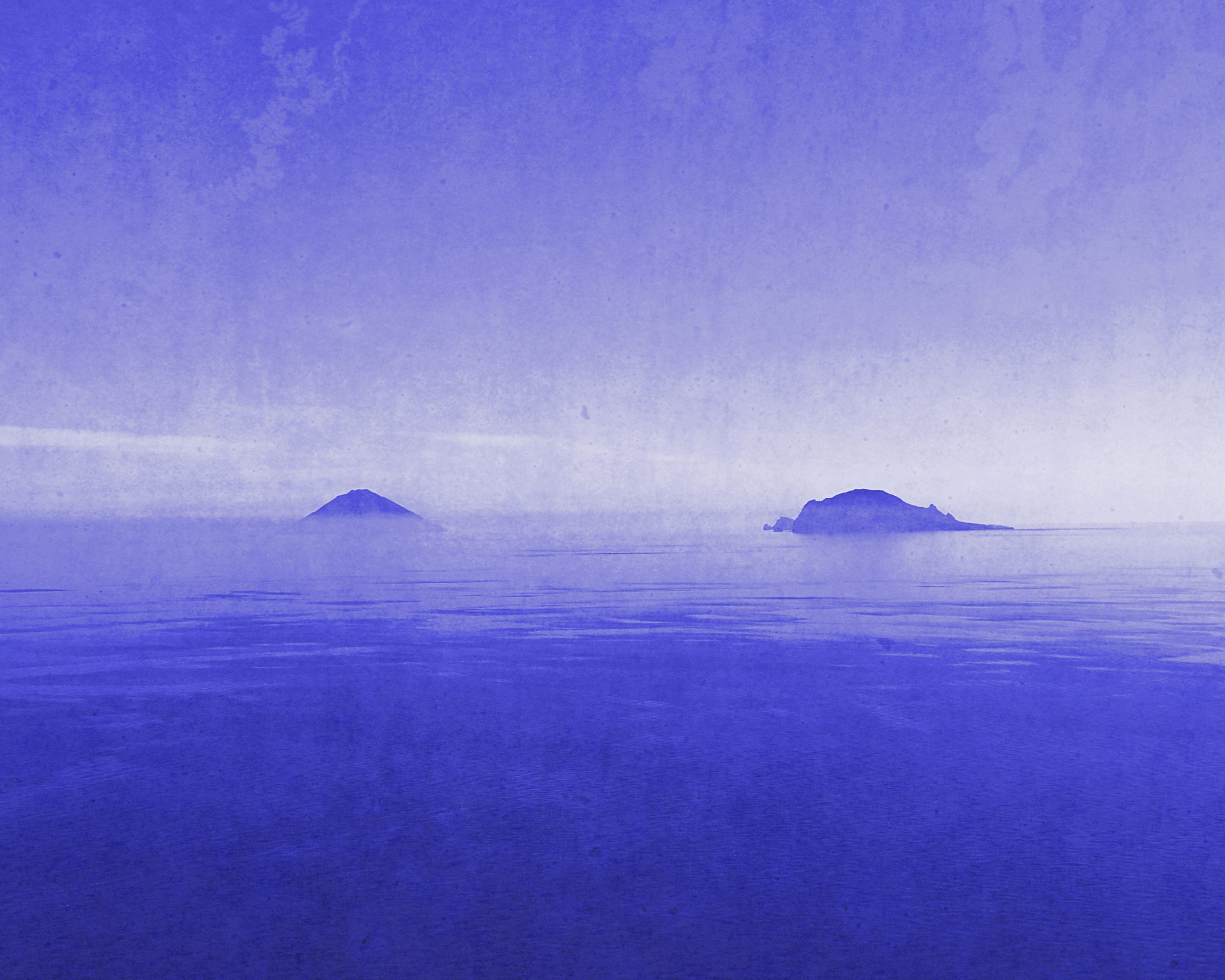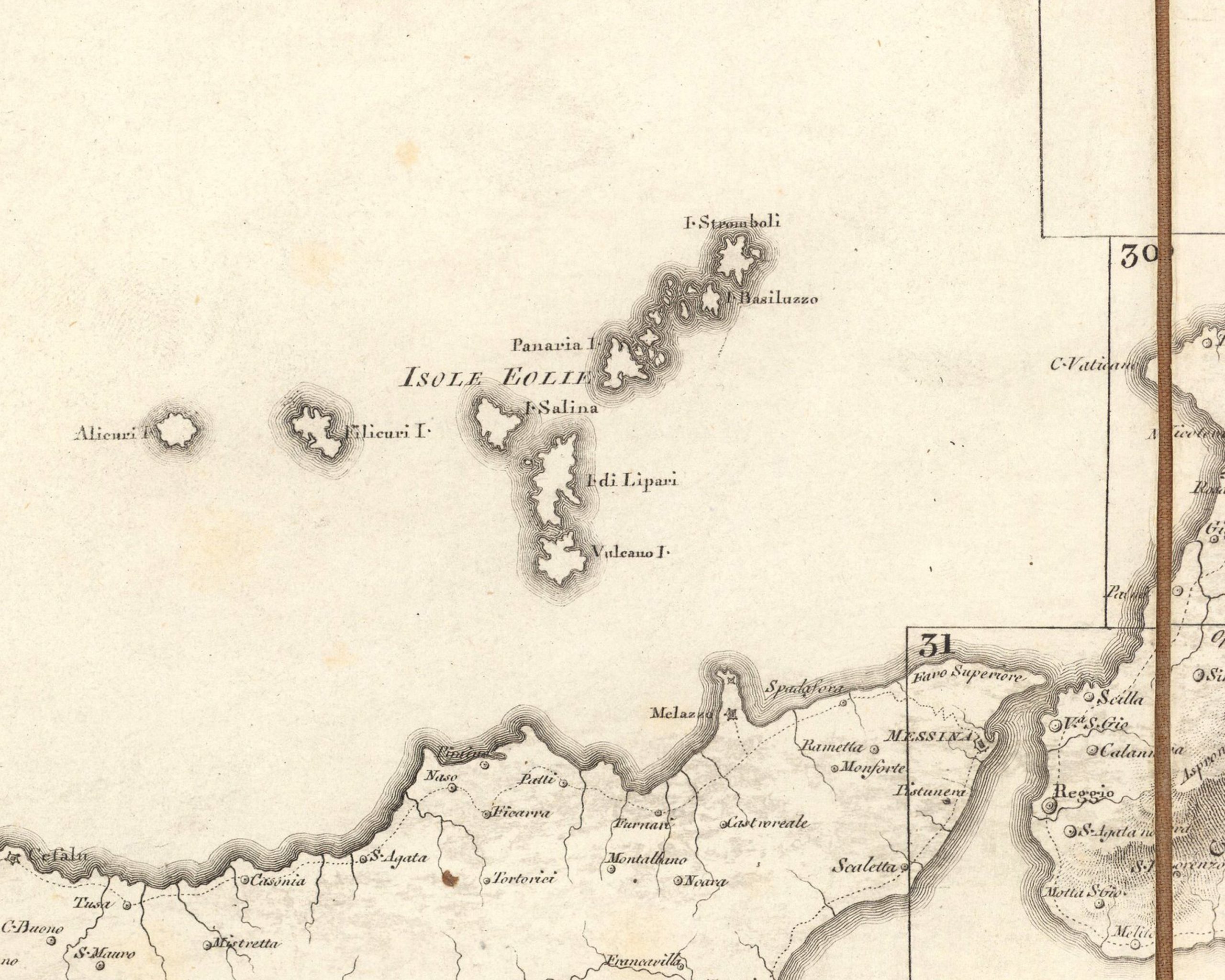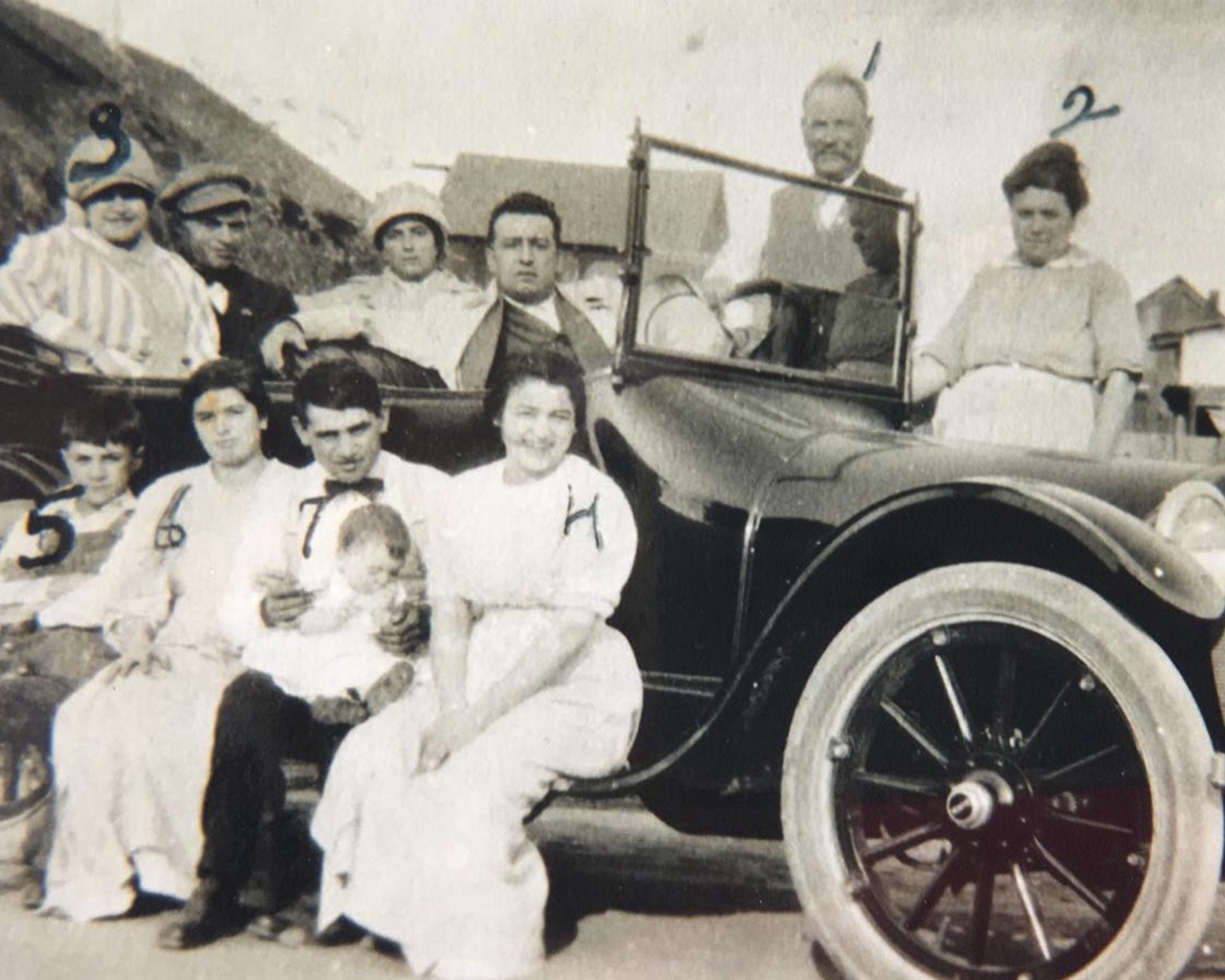
Aeolian Islands (IT) – Stromboli and Panarea (view from Portella Archeological Site, Salina), 2021. Courtesy of the artist.
Islands of Memory is an artistic and research project that focuses on the peculiar territory of the Aeolian archipelago and the phenomenon of emigration concerning its islands. This survey focuses on the Aeolian Islands’ mapping and traces in relation to migratory processes, memory formation, and diaspora. The Aeolian Islands are seven islands in the Mediterranean Sea and North-East of the Sicilian coast, and together, they compose an archipelago of volcanic formation located at the bottom of the Italian peninsula. These islands are named after the Greek god of wind Aeolus, who, it is told, made the islands his home while teaching the natives to recognize and foresee meteorological phenomena. Due to its particular nature and inconvenient geographical position, the territory is simultaneously open to others and closed off to the rest of the world.
Description
“As for all things tending towards infinity, a set of islands remember. An island remembers its territory. In constant motion, always in the process of, far from the accuracy of precision or linearity. An island knows its people, composed by all the multitudes stepping into its shores’ mutable delimitations. An island acknowledges its margins, facing the complex apparatus represented; it translates through the continuously changing historical context. An island acknowledges, conscious about the fact that over time, its delimitations might be subjected to a substantial dose of interpretation. An island possesses multiple identities, knowing that “yesterday” was never simply there, and tomorrow cannot be taken for granted. Before and after are deeply interconnected, depicted as different entities belonging to a separate temporality.” (Niccolò Masini, Salina, 2021)
Islands of Memory, initiated by Niccolò Masini (artist/researcher) and Elettra Bottazzi (Aeolian native curator/researcher), developed from Masini’s long-term project Islands of Time, started in 2019 and still ongoing worldwide in areas most impacted by the migration phenomenon. In 2021, the Amaneï artist residency program hosted Niccolò Masini. Home of Bottazzi’s ancestors, Amaneï is a cultural center located in a 19th-century building on Salina island that develops interdisciplinary projects deeply related to its territory and community. As a return to the territory and as a result of the first phases of the investigation, Niccolò Masini’s solo exhibition Islands of time – As for all things tending towards infinity, curated by Elettra Bottazzi, opened in Amaneï spaces in June 2022.
While confronting the construction of the Aeolian identity and diaspora, Islands of memory considers the concept of identity as an ongoing “composition” that is never completed, always changing, and constantly communicating with others. Beyond territory, cultural formations, and borders, the performative and procedural characteristics of memory make the process of construction or reconstruction of our identities possible even in others’ lands. If the “Islands” are used to metaphorically guard a reference system, the work on the field in the Aeolian archipelago and the creations of its migrants add to this metaphor even stronger research inputs. The feeling of belonging to a place, a continent of spatial, social, and historical references, is found through memory, the kind we build when we are distant from the imaginary or physical “places” we come from and, in some way, we might belong to.
The project re-acknowledges the epistemological reasoning behind the understanding of the migrant, imagining its comprehension as a shifting phenomenon rather than a stable and predetermined resultant. Dwelling on the constitutive elements of memory also means questioning the predominance of a globalized culture of territorial divisionism, acknowledging the faces and voices of the contemporary historical formation palimpsest. A border represents a territory where “past” and “future” permanently clash. The “past” is never simply a static or ossified entity. Perhaps we should conceive borders and identity from a new materialistic perspective, for it can be redeemed, productively reconfigured in an iterative unfolding of space, time, matter. It is a perspective in which the “future” is not what will unfold; instead, “past” and “future” are iteratively reconfigured and enfolded through the world’s ongoing intra-activity. According to this new perspective, the “past” remains open to change.

Carta Generale Del Regno Di Napoli (detail), Rizzi Zannoni and Giovanni Antonio (1736-1814).
Historical Framework
The Italian presence in North America has been the most sustained, continuous, and varied of any foreign-born group. More than 5 million Italians have emigrated to build new lives in the US since the second half of the 19th century. Italy was formally unified after the annexation of Rome in 1870. Although united politically, the reality of things was much different. The unification process, together with the recently achieved fragmentation into distinct regional identities, exacerbated the country’s social and economic issues. Since its unification, Italy has been a land of migration. As a matter of fact, it is estimated that 27 million Italian migrants left their birthplace between 1870 and 1970 for political and economic reasons.
In the middle of the 19th century, Aeolian sailors were part of the long and dangerous transoceanic routes because of their expertise in sailing and shipbuilding. However, after reaching the coasts of the American continent, Australia and New Zealand, some established themselves as free migrants, moved by curiosity and new opportunities, while others chose to go back. Initially, the migrations were relatively low, but they laid the foundation for the imminent Aeolian mass emigration. The flow of migrants to the United States came to a halt between the two World Wars, both of the fascist anti-migration policies and more restrictive US legislation. From that moment, the Aeolians started heading towards Oceania and Argentina, where the Aeolian community was established thanks to its mutualistic assistance.

Aeolian first-generation family immigrants, California (USA), 19th Century. Archivio Cervellera.
On memory, islands and the archive
“Migrations have always been part of the logic of human settlement on the planet since the beginning of time. Likewise, the setting of limits had an early start, and the safekeeping of territory, property, and people has been the driving force for the creation of all kinds of boundaries ever since”.
The island symbol, a lone land encircled by water, is a subject found in various forms of expression. At the end of the nineties, Jan Assmann stated that collective identity is founded on and passed down through cultural formations (rituals, images, texts, etc.). The author compares these formations to the metaphor of “islands in time”, placed on an imaginary horizon like reference points, symbolizing the cultural memory, an eternal present, or a contemporized past crystallized and suspended in time. Assman highlights the role of identity and memory formation in his theories, conceptualizing the transpositional processes through the metaphor of the islands as an imaginative space of “retrospective contemplativeness”. Jan Assman considers the notion of individual memory as socially mediated and related to a group. In his term, the so-called ‘others’, or, as someone else would phrase it, the ‘alter’, are not depicted as any set of people but are instead seen as groups conceived through an iconographical imaginary bound by their past. Within the endless series of possibilities implied in this relational process, every individual might belong to different groups and be carried away by collective self-images and memories. In developing the concept of retrospective contemplativeness, Assman refers to Aby Warburg’s concerns with the objectification of cultural theory. Warburg’s large-scale archival project Mnemosyne aimed to deconstruct the pictorial memory of Western civilization.
The island symbol outlines the metaphoric and conceptual foundation of the feeling of belonging and its declinations. The Aeolian migrants keep through generations their collective memory (cultural with Assman, social with Warburg) in a different context, mainly geographical. They have chosen their archipelago as a system of reference that is both distant and the guardian of a collective identity. Tracing the pathways of the Aeolian diaspora is significant to analyze the crisis of the equivalence territory=culture and/or territory=memory, regarding the relationship between land and culture and land and memory, at a point in history where nomadism and migrations are part of our everyday life. The utilization of the metaphor of the “islands in time” offered by Assman (and Warburg) allows us to locate a systematic set of references ordering the historicization of specific narrations. Assman argues that subjectification influences the capacity of any imaginative portion of the know-unknown memory and relates to it. Such diversification acknowledges the process of archiving information, introducing the role of memory in visualizing specific sets of adaptations. In other terms, they construct a mnemonic stratification within a system’s boundaries. Nonetheless, beyond what is collectively held as a memory of the known/unknown, the stratification might produce voluntary/involuntary recollections that, in Proust’s words, are “losing their mutual exclusiveness”.
Migration is a key factor of “traveling memories”. When referring to migrants, the concept of borders is rarely defined within boundaries described by their ‘static’ nature. The meanings of exploitation, civilization, ethnicity, territorialization/de-territorialization processes, and transnational identities co-exist within limits imposed by definition between local and global. In this perspective, the diasporic itineraries are studded with a whole series of personal recollections: correspondences, family photos, and travel documents; these elements represent specific places that define the process of archiving the historical and anthropological understanding. Following this identification process, migrants’ recollections oscillate between the country of origin and the area where they emigrated. Belonging to a hypothetical territory referring to the past doesn’t imply a memory of pastness; instead, it acknowledges the constitutive elements compelling the origins embodied in imagining a possible future. Therefore, the before and the after are deeply interconnected, represented as two separate entities belonging to a separate temporality.

Rendering of a possible video installation combining archival materials and texts with Lipari island landscape (IT). Courtesy of the artist.
FINAL OUTCOMES
How does a political boundary interfere when relating to a specific place-making policy?
Since the second half of the 20th century, the archive has been turned into a place where to assemble or relate different materials: a diverse way to reflect and display the relationship between time, memory, and history. Islands of memory aims to make art practices a tool for interpretation, change, and critical thinking with research and the gathering of interdisciplinary materials. During the various phases of research, the project will attempt to trace the memories of migrants from the Aeolian Islands in the countries where they settled (United States, Argentina and Australia), beginning with the New York State and Ellis Island area. In each case study, the research will involve collecting, using and manipulating both found and living migratory archives. This process encapsulates a spectrum of different artistic approaches to existing archives: systematic, contemporary, unclassified, recent, incomplete, hidden, and personal or third-party archives. Given the role of ethnographic practice in creating archives and how nation-states control narratives relating to diasporic cultural identity and memory, the contribution of archival materials in the development and sustainability of socio-economical systems of reference.
The project’s outcomes will include a restitution phase of the audio and visual materials collected during the various research phases and interviews. Furthermore, as a possible outcome scenario, with the support of Amaneï association and in dialogue with the Aeolian territory and its communities, the final results will intervene with some particular sites of the Aeolian islands and their landscape. These landscape interventions will play with the formation processes of different geographical areas and, in doing so, generate speculative hypotheses regarding the construction of memory and the creation of utopias. Ultimately, working closely with different communities and institutions, the aim is to produce a publication with a selection of the collected materials, researches and essays.
In each case study, the research will attempt to track sequences of events to identify shifting meanings and connotations associated with physical ‘places of memory’—be they temporary settlements, connection points, crossing paths, or bridges. Moreover, analyzing how traveling memories are in contact with disparate, sometimes desperate, perceptions made of historical legacies, circulation of narratives, images, models of remembrance, and exploitation.
Karen Barad, Re(con)figuring Space, Time, and Matter, 2001, 98, from Rick Dolphijn & Iris van der Tuin, New Materialism: Interviews & Cartographies, Open Humanities Press, 2012, 113.
[1] Karen Barad, Re(con)figuring Space, Time, and Matter, 2001, 98, from Rick Dolphijn & Iris van der Tuin, New Materialism: Interviews & Cartographies, Open Humanities Press, 2012, 113.
[1] Ibid, 68.
[1] Diana B. Wechsler, Migraciones en el arte contemporà/Migrations in the contemporary art, Eduntref – Editorial de la Universidad Nacional de Tres Febrero, 2015, p. 69.
[1] Jan Assmann and John Czaplicka, Collective Memory and Cultural Identity, New German Critique, No. 65, Cultural History/Cultural Studies (Spring – Summer,1995), pp. 125-133, 127.
[1] Ibid, 129.
[1] Astrid Erll, Travelling Memory, Parallax 17.4, 2011, pp. 4-18.




